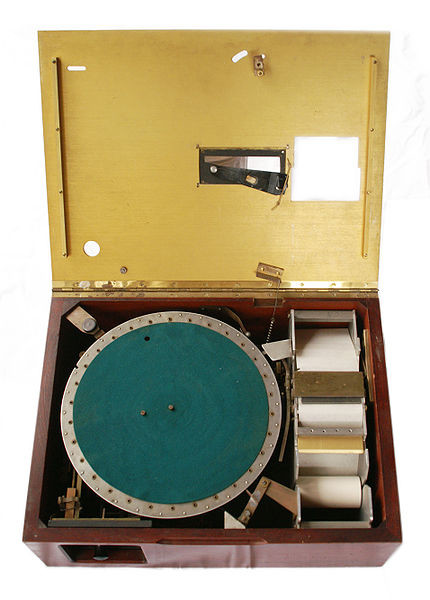In his recent book Teaching Machines, Bill Ferster charts the fascinating history of educational technology, from the humble origins of the postal Correspondence Courses for miners in the 19th Century through to the virtual tutors of the present day. As part of his analysis the author observes a shift in emphasis not only in the underlying technologies, but the theoretical underpinnings that forge the interplay between learning and technology.

Skinner Teaching Machine
If Ferster wrote this book half a century ago, the modern day protagonists would include the likes of Sidney Pressey and BF Skinner; both pioneers of the mechanical teaching devices of that time. Their approach to adaptive tutoring was shaped by behaviourist perspectives on how students learn best. Many of their design elements – adaptivity, structured questions and rewards (candy dispensers, no less) – resemble even the most advanced virtual tutors of today.
Over the past few decades, however, psychologists have taken a back seat to computer scientists and engineers. Today’s high-powered computers have taken programmed instruction to a new level; the ability to capture more granular information on student performance and understanding affords deeper opportunities to adapt to their individual needs. Virtual tutors are driven by sophisticated machine learning algorithms, with psychological principles often an afterthought.
The power of iTalk2Learn is that it does away with this dichotomy. The consortium boasts a mix of all these stakeholders and the expertise of machine learning practitioners, experts on human-centered design and educational psychologists have been fused to develop a well-rounded system that is both cutting edge in its engineering but also grounded in sound pedagogy.
Consider the three core components of the iTalk2Learn system. In one respect, the Vygotsky Policy Sequencer is a greatly enhanced version of the mechanical devices of old, taking adaptivity to new levels with the sheer volume of data it is able to leverage for performance prediction. Fractions Lab is iTalk2Learn’s very own microworld that fosters the kind of open-ended exploratory learning espoused by Seymourt Papert in the 1980s. Speech recognition is a wave to the future; further blending the interaction between human and computers to afford authentic and engaging learning experiences to students.
iTalk2Learn stands on the shoulders of the giants of the past while leveraging the technologies of the future. This, we believe, should be the gold standard for all of EdTech.
References
[1] Ferster, B.F., (1956). Teaching Machines. [online] https://goo.gl/VW9lzB.
[2] B.F Skinner. Teaching machine and programmed learning. [online] https://goo.gl/OrH9QX.
[3] http://commons.wikimedia.org/wiki/File:Skinner_teaching_machine_08.jpg.


